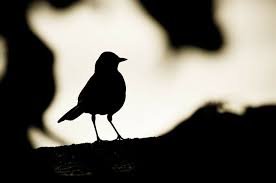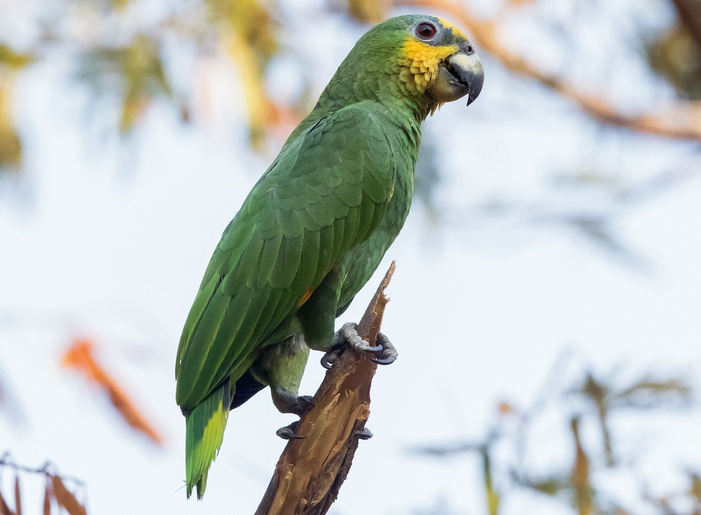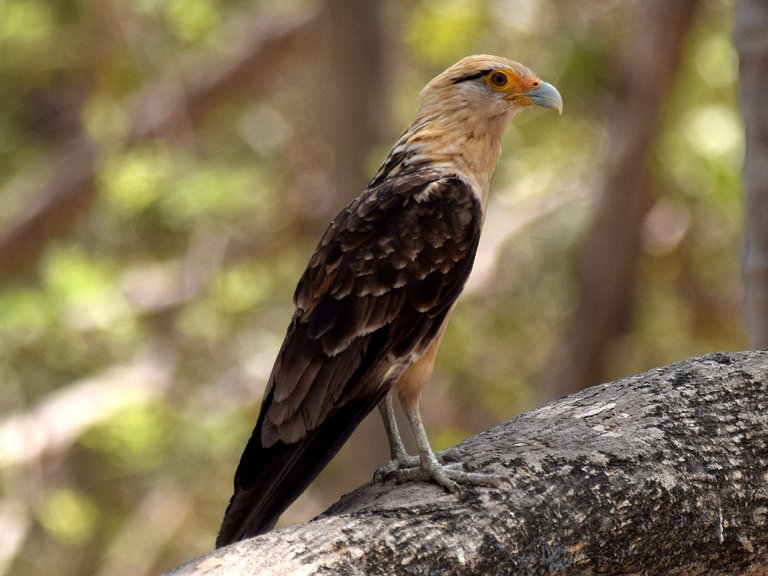
Estimados Hivernautas, hoy voy a comenzar a escribir sobre algunas aves que llegan a mi urbanización y las he avistado desde la ventana de mi apartamento.
Comenzaré con algunas aves de mediano tamaño y en otro post les mostraré algunos pájaros que frecuentan el área verde frente al edificio.
La primera especie a presentarles son una pareja de loros que hicieron nido en el extremo superior de un tronco de Chaguaramo (Palma) truncado, abriéndose paso por el material blando en su parte superior y excavando dos huecos por los lados.



Los primeros días de su llegada se veía solo la pareja, pero después de varias semanas se vieron salir por los huecos en el tronco a dos loros de menor tamaño, las crías saliendo del nido.
Al crecer el número en la familia las crías aprovechaban las ramas de un árbol cercano para practicar vuelos cortos, posándose sobre éstas.
Este pequeño grupo de aves, residentes temporales en mi urbanización, pertenece a la Familia Psittacidae y su especie es Amazona amazonica, que vive en las selvas tropicales de montaña baja.

Ahora les presento a un gavilán que se presenta dentro de la urbanización



Se trata de un Caricare Sabanero (Daptrius chimachima)

Esta especie llegó en pareja y uno de ellos se "atrevió" a bajar hasta la propia entrada del edificio para consumir algunos insectos y semillas en el gramado.
Acostumbra habitar en espacios abiertos como pastizales con ganadería y campos dedicados a la agricultura.
**

La Garcita Reznera [Cattle Egret] llegó una tarde y le hice una foto. Su nombre científico es Bubulcus ibis y proviene de las tierras bajas del llano venezolano.
Su habitat son sabanas, pastizales, pantanos y áreas ganaderas.
Se alimentan de peces, ranas, insectos terrestres y acuáticos, caracoles, gusanos y lombrices de tierra y algunos pequeños vertebrados como sapos y pequeñas crías de otras aves.
**

También llegó un día a la urbanización una pareja de garzas negras, cuyo habitat se encuentra en las tierras bajas, pero que al igual que las aves antes descritas se aventuran a migrar hacia tierras cercanas a los mil metros de altura. Su nombre científico es Phimosus infuscatus.
Se alimentan de insectos que sacan de debajo de la tierra, también de lombrices, arañas y hormigas.
Espero les haya gustado esta breve descripción de aves que llegan a un centro urbano y alegran el paisaje y la vida de sus habitantes.
Fuentes
Imágenes:
Portada
https://www.google.com/search?client=firefox-b-d&q=imagenes+de+aves+pixabay+gratis
Loro Guaro
Gavilán Caricare
https://ebird.org/species/orwpar?siteLanguage=es_VE
https://ebird.org/species/yehcar1?siteLanguage=es_VE
Las demás fotografías son de mi autoría
Bibliografía:
http://elbibliote.com/resources/animales/ficha.php?id=819
https://ebird.org/species/yehcar1?siteLanguage=es_VE
https://www.naturalista.mx/taxa/5017-Bubulcus-ibis
Fotos: Cámara Nikon Coolpix, 8x wide y smartphone Blu G8.
Translate: DeepL

Dear Hivernautas, today I am going to start writing about some birds that come to my urbanization and I have sighted them from the window of my apartment. I will start with some medium-sized birds and in another post I will show you some birds that frequent the green area in front of the building. The first species to present to you are a pair of parrots that made nests in the upper end of a truncated Chaguaramo (Palm) trunk, making their way through the soft material on top and digging two holes on the sides.



The first days of their arrival only the pair was seen, but after several weeks two smaller parrots were seen coming out of the holes in the trunk, the young leaving the nest. As the number in the family grew, the young took advantage of the branches of a nearby tree to practice short flights, perching on them. This small group of birds, temporary residents in my urbanization, belongs to the Family Psittacidae and its species is Amazona amazonica, which lives in low mountain rainforests.

Now I present to you a sparrowhawk that appears inside the urbanization 


This is a Caricare Sabanero (Daptrius chimachima)  This species arrived in pairs and one of them "dared" to go down to the entrance of the building to consume some insects and seeds in the grass. It usually inhabits open spaces such as pastures with livestock and fields dedicated to agriculture. **
This species arrived in pairs and one of them "dared" to go down to the entrance of the building to consume some insects and seeds in the grass. It usually inhabits open spaces such as pastures with livestock and fields dedicated to agriculture. ** 
The Cattle Egret arrived one afternoon and I took a picture of it. Its scientific name is Bubulcus ibis and it comes from the lowlands of the Venezuelan plains. Its habitat is savannahs, grasslands, swamps and cattle ranches. They feed on fish, frogs, terrestrial and aquatic insects, snails, worms and earthworms and some small vertebrates such as toads and small young of other birds.
** 
A pair of black herons, whose habitat is in the lowlands, also arrived at the development one day, but like the birds described above, they venture to migrate to lands close to a thousand meters above sea level. Their scientific name is Phimosus infuscatus. They feed on insects that they take from under the ground, as well as on earthworms, spiders and ants.
I hope you liked this brief description of birds that come to an urban center and brighten up the landscape and the lives of its inhabitants.
Sources
Images: #### Portada https://www.google.com/search?client=firefox-b-d&q=imagenes+of+birds+pixabay+for+free
Guaro Parrot https://ebird.org/species/orwpar?siteLanguage=es_VE Gavilan Caricare https://ebird.org/species/yehcar1?siteLanguage=es_VE
The other photographs are of my authorship
Bibliography:
http://elbibliote.com/resources/animales/ficha.php?id=819
https://ebird.org/species/yehcar1?siteLanguage=es_VE
https://www.naturalista.mx/taxa/5017-Bubulcus-ibis
Photos: Nikon Coolpix camera, 8x wide and Blu G8 smartphone. Translate: DeepL
Congratulations @redactor1918! You have completed the following achievement on the Hive blockchain And have been rewarded with New badge(s)
Your next target is to reach 50 posts.
You can view your badges on your board and compare yourself to others in the Ranking
If you no longer want to receive notifications, reply to this comment with the word
STOPTo support your work, I also upvoted your post!
Check out our last posts:
Support the HiveBuzz project. Vote for our proposal!
Gracias Hivebuzz
You're welcome @redactor1918.
BTW, we need your help. May we ask you to support our proposal so our team can continue its work?
You can do it on Peakd, ecency, or using HiveSigner
Thank you.
We appreciate your work and your post has been manually curated by zoology team (oscurity,nelinoeva) on behalf of Amazing Nature Community. Keep up the good work!
Tanks you
<hr>We appreciate your work and your post was manually curated by @none! from the DNA team!
Reach us on Discord to learn more about the project!
Hello @redactor1918!Gracias por su apoyo
Hola estimado amigo, es una bendición que puedas disfrutar ver esas aves en la urbanización donde vives, disfrute leer tu post. Te deseo salud, éxitos, prosperidad y que tus metas se hagan realidad.
Verdad que sí , igualmente para ti muchos éxitos personales y sociales, gracias por tu comentario y me alegro que lo hayas disfrutado
Que impresionante toda la fauna que se ve al investigarla bien felicitaciones!!
Sí, así es requiere tiempo, paciencia y suerte para verla en el momento preciso , Gracias